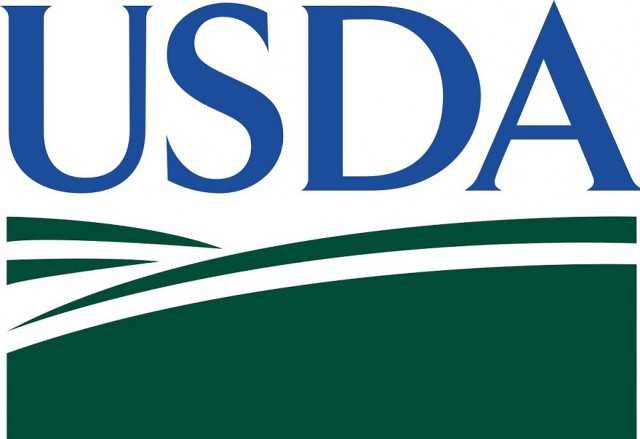HANOI, Vietnam – In its annual report on the coffee sector in Vietnam, the Foreign Agricultural Service of the US Department of Agriculture revised its estimate of production for marketing year 2022/2023 down to 29.750 million bags, green bean equivalent (GBE), nearly 6 percent lower than the previous marketing year, based on lower yields, high production costs, and a drop in cultivation area.
Post revised MY 2021/22 exports up to 29.01 million bags (GBE) and ending stocks down to 3.58 million bags (GBE) due to favorable exchange rates and high export demand.
Post also revised MY 2022/23 exports to 28.8 million bags (GBE) due to lower production and difficulties in purchasing new inventory.
Post forecasts total coffee production in MY 2023/24 to increase by 5 percent to 31.3 million bags (GBE) due to favorable weather conditions and higher yields. Rains are forecasted 10-20 percent higher than average, supporting irrigation as well as coffee tree growth.
Famers also gradually replanted coffee trees to enhance yields. Post forecasts MY2023/24 coffee exports at 27.5 million bags (GBE) based on a huge drop in stocks and stricter European Union import regulations.
Coffee production in Vietnam
In MY 2022/23 Robusta coffee production witnessed a decline compared to the previous crop due to an off-cycle year, high production costs, and a drop in cultivation area. Industry contacts note that production costs for MY 2022/23 were around USD 1,200 per metric ton (MT) on average, 15 percent higher than MY 2021/22. Higher labor costs and a 70 percent rise in fertilizer prices are the primary drivers behind this increase. As a result, farmers applied fewer chemical fertilizers and supplements and partially switched to organic fertilizers such as manure composts, leading to lower yields and production.
Furthermore, the cultivation area in the Central Highland regions witnessed a downtrend due to crop shifting or intercropping with other profitable fruit trees such as durian, avocado, and passion fruit, especially in the Dak Lak and Gia Lai provinces. Based on these factors, Post revised its estimate for MY 2022/23 total coffee production down by 6 percent to 29.75 million bags (GBE), including 28.74 million bags (GBE) of Robusta.
According to industry contacts, weather conditions are still favorable to growth of the MY 2023/24 coffee crop in the Central Highlands region. The Vietnam Meteorological and Hydrological Administration forecasts a 50-60 percent chance of the La Niña phenomenon continuing until this spring and a 65-75 percent chance of becoming more neutral in the summer.
The ENSO (El Niño–Southern Oscillation) phenomenon is expected to return in the last months of 2023 with a hot phase. Rainfall forecasts the coming months are encouraging with rains expected to be 10-20 percent higher than average in May-June, remaining at average levels in July-September, and slightly lower in October.
Temperatures are also expected to be favorable for coffee harvests. Temperatures were slightly lower than average in the first months of 2023 and are forecasted to be average in May-September and higher than average in October. Moreover, USDA Global Agricultural and Disaster Assessment System’s (GADAS) data showed that monthly accumulated rainfall from January to April 2023 was lower than last year, but higher than normal in the Dak Lak, Dak Nong, Gia Lai, Kon Tum, and Lam Dong Provinces. These weather forecasts may also support MY2023/24 coffee harvests.
In addition, farmers are steadily replanting coffee trees with new cultivars that have better productivity and disease resistance capabilities. This has helped enhance the yield of the coffee crop. In other developments, provincial Departments of Agriculture and Rural Development report that there are around 185.8 thousand hectares (THA) of land, out of approximately 590THA, in the Gia Lai, Dak Lak, Lam Dong and Dak Nong Provinces that have been certified by internationally recognized sustainability certification systems, including 4C, UTZ, Fair Trade and Rainforest Alliance, and Organic. This is also part of the Vietnam Government’s strategy to develop the coffee industry in a more sustainable and responsible manner, as well as enhance quality and yield.
Based on favorable climate forecasts for the harvesting stage in the Central Highlands, the on-cycle year, and the higher yield of new cultivars, Post forecasts Vietnam MY 2023/24 total coffee production at 31.3 million bags (GBE), 5 percent higher than MY 2022/23, including 30.23 million bags (GBE) of Robusta. Post forecasts MY 2023/24 Arabica production at 1.07 million bags, a slight increase over the last year due to an expansion in the Northern region. Post notes that some industry contacts are even more optimistic in their forecasts and are predicting a potential increase in overall coffee production of 5-10 percent higher than the previous year.
Exports
In the last half of MY 2021/22, Vietnam businesses were able to expand exports based on favorable exchange rates and high export demand. Post revised MY 2021/22 exports up to 29.01 million bags (GBE) and MY 2021/22 ending stocks down to 3.58 million bags (GBE). In the first half of MY 2022/23, Vietnam’s coffee exports reached 16.97 million bags (GBE), a nearly 3 percent increase according to Vietnam General Statistics Office (GSO) data. Exports to the European Union (EU) market accounted for about 40 percent of total export volume.
However, there was a decline of nearly 2 percent, as a plummet in exports to Belgium of 44 percent overwhelmed growth in other key EU markets, such as German, Italy and Spain which saw increases of 10,16, and 18 percent respectively. However, Vietnam exports to other markets did see growth, including Russia (57 percent), Algeria (36 percent), and the United States (23 percent).
The overall export volume for the MY 2022-23 crop is expected to slightly shrink due to lower production than the previous year and difficulties in purchasing. Due to the surge in exports of the first half of MY 2022/23, exporters are now facing difficulties in purchasing new inventory due to high domestic prices. Farmers are also retaining stocks as they wait for prices to rise, adding further challenges to businesses wishing to purchase. Additionally, most coffee exporters have had fewer financial resources for purchases this year because of relatively high interest rates and exchange rate fluctuations. Ongoing high domestic prices are causing hesitancy among exporters in signing future contracts for fear of being unable to balance domestic and export prices. Based on these factors, Post revised MY2022/23 exports estimate to 28.8 million bags (GBE), a nearly 1 percent decrease compared to the previous marketing year.
For MY 2023/24 exports, trade contacts note that global demand may increase by 1 to 2 percent based on higher demand in the United States and Asia. Additionally, Vietnam Robusta is expected to be more competitive with global Arabica production which is facing higher costs. As a result, many consumers are forecasted to switch from Arabica to Robusta due to more attractive prices amid recession concerns. Export supplies of other major exporting producers, such as Brazil and Indonesia, are also showing weaker numbers, giving Vietnam an opportunity to expand its export share. According to the Brazil Institute of Geography and Statistics, Brazil Robusta coffee production for 2023 may decline by nearly 9 percent over 2022, while Indonesia output is forecast to fall to its lowest levels in nearly a decade, according to Volcafe, a coffee trader.
However, there is a potential challenge for Vietnam exporters with the EU Commission’s Regulation 2023/466 which was published on March 3, 2023, and will go into effect by September 2023. This regulation, which stipulates stricter regulations on pesticide residues for nuts, including coffee at 0.1 mg/kg, may cause problems for Vietnam coffee farmers and exporters at the beginning stages of production. Besides that, it is estimated to witness the huge drop of 50 percent in ending stock of MY 2023/22 compared to MY 2022/21. As a result of the above, Post forecasts MY2023/24 total coffee exports at 27.50 million bags, a 4 percent decrease compared to the previous marketing year.
Green Bean Exports from Vietnam
Vietnam’s green bean exports, particularly Robusta, grew to 15.28 million bags in the first half of MY2022/23, a nearly 3 percent increase compared to the same period of previous marketing year.
Soluble and Roasted Exports
Post revised its estimate for MY2022/23 soluble and roasted coffee exports down to 2.9 million bags and forecasts MY2023/24 soluble and roasted coffee exports to increase 3 percent to 3 million bags.
Stocks
Post revised ending stock for MY 2022/21 down to 3.58 million bags. As noted in “Export” section, Vietnam businesses expanded exports in the last half of MY 2021/22 based on a favorable exchange rates and high export demand. This outflow diminished actual stocks, leading the huge drop of 50 percent in ending stock of MY 2023/22. Post revised its estimate of ending stocks for MY 2022/23 down to 1.81 million bags. Post forecasts a slight recovery in MY 2023/24 stocks to 2.76 million bags.














